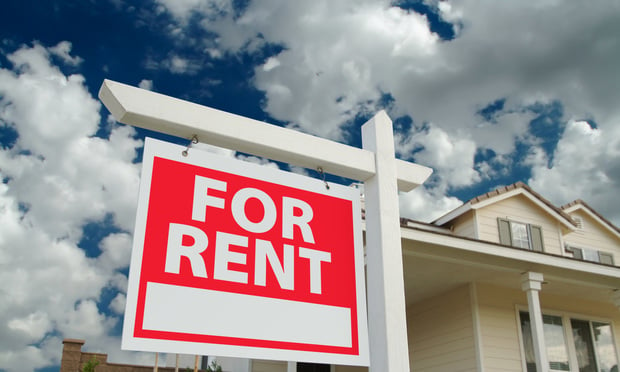RMs Have Help To Counter Bio-Threats
 As businesses, property owners and risk managers reassess their security plans following the Sept. 11 wakeup call, they can take heart that resources are available to help them respond to, and recover from environmental, biological and chemical disasters or threats.
As businesses, property owners and risk managers reassess their security plans following the Sept. 11 wakeup call, they can take heart that resources are available to help them respond to, and recover from environmental, biological and chemical disasters or threats.
One such firm is LVI Services Inc., an environmental remediation and demolition services outfit headquartered in New York. LVI recently formed a Special Emergency Response Team, capable of handling cleanups from biological and chemical events 24-hours-a-day, seven-days-a-week.
LVI President Burton T. Fried said the Sept. 11 terrorist attacks and the subsequent anthrax scare made glaringly apparent the lack of sufficiently trained and supervised people prepared to respond to biological, chemical and other threats.
LVI, which has been in business for 16 years, drew the emergency response team from its most experienced staff–workers specially trained and equipped to respond to threats at public or commercial buildings, he said.
The Special Emergency Response Team can be deployed rapidly, Mr. Fried explained, because of the company's 20 offices nationwide and labor force of nearly 2,000. LVI said it also is prepared for natural disasters.
For example, at least one insurer asked for LVI's help when Tropical Storm Allison caused severe flooding in Houston last summer, Mr. Fried said. LVI also has been performing mold remediation since 1994, he noted.
 LVI said its clients in this regard have ranged from large, such as the federal government, which called in the firm when mold was discovered during construction of the Ronald Reagan Building in Washington, D.C., to small, such as private homeowners.
LVI said its clients in this regard have ranged from large, such as the federal government, which called in the firm when mold was discovered during construction of the Ronald Reagan Building in Washington, D.C., to small, such as private homeowners.
Another firm providing emergency response as well as industrial cleaning services is Young's Environmental Cleanup Inc. of Flint, Mich. The company also has an office in Grand Rapids.
Young's has been in the environmental services business since 1989, although it originated and continues to provide services as an excavation company, said the firm's response manager, Lance Klein.
Mr. Klein stated that even before Sept. 11, Young's was prepared for large-scale hazardous-material emergencies as well as for large evacuations.
Young's also performs mold remediation and handles chemical and biological hazards. In fact, last fall, it responded to what turned out to be 20 incidences of anthrax hoaxes. The firm said it has provided emergency response services at industrial sites facing cyanide gas releases.
While Young's operates primarily in the Midwest, it frequently travels out of the area, Mr. Klein said. It has removed underground storage tanks in Florida and along the East Coast, and has assisted with large oil-spill cleanups.
Young's has contracts with various government agencies, including the federal Drug Enforcement Agency, for which the firm has performed “clandestine lab” cleanups, he said.
Other clients include railroads, for which it provides emergency response in cases of train derailments, and the Michigan State Police, for which Young's responds to highway emergencies, Mr. Klein said.
In its work for insurance companies, Mr. Klein said that Young's frequently is dispatched to private residences, generally for fuel-oil spills. He called those “the most difficult” emergencies because of the personal toll they take on homeowners and the great expense to policyholders and their insurers.
“You're dealing with people whose homes and belongings are all contaminated, and it takes orchestrating different subcontractors and usually a lot of local authorities,” Mr. Klein explained.
Mr. Klein noted that “fuel jobbers” (employees of oil supply companies who fill tanks on-site) frequently are responsible for leaks. Young's, for example, has seen situations where jobbers pumped 500 gallons into residential tanks that needed only 100 gallonsor into tanks that were not hooked up at all.
He offered insurers several suggestions in regard to private residences:
Fuel oil tanks more than eight years old holding 275-gallons should be inspected.
Home fuel system hookups should be inspected for leaks.
Fuel oil tank legs and foundations should be examined to make sure they can support the weight of a full tank.
Several risk-control measures also are effective in reducing the threat of terrorist attacks, LVI's Mr. Fried said.
One such measure is the installation of security programs. These can include low-tech measures as simple as locking doors, or others such as posting guards at company facilities, he said.
More sophisticated measures include the installation of surveillance cameras; the placement of sensors in lobbies and in interior heating, ventilation and air conditioning systems; and the utilization of scanning technologies, he said.
Further, Mr. Fried noted, systems exist that make it relatively easy to shut down a building's entire air-control handling system if it is suspected that part of the building has been exposed to a chemical or biological agent. This shutdown system prevents the entire building from being permeated.
To LVI's Mr. Fried, it is clear that if there were to be “a widespread attack,” federal, state and local governments would not be able to provide sufficient emergency response.
For this reason, he believes that the private sector should be developing a kind of environmental-response reserve force–similar to the Army or Navy reserves–ready to support the government in the event of another national emergency such as a terrorist attack.
These private-sector reserve forces should be prepared to respond to government buildings, Post Offices, and even private industrial facilities and high-rise office buildings, Mr. Fried suggested.
He observed that if other companies the size of LVI or larger had emergency response teams, their combined strength would represent a “formidable force” for emergency response.
Reproduced from National Underwriter Property & Casualty/Risk & Benefits Management Edition, May 13, 2002. Copyright 2002 by The National Underwriter Company in the serial publication. All rights reserved.Copyright in this article as an independent work may be held by the author.
Want to continue reading?
Become a Free PropertyCasualty360 Digital Reader
Your access to unlimited PropertyCasualty360 content isn’t changing.
Once you are an ALM digital member, you’ll receive:
- Breaking insurance news and analysis, on-site and via our newsletters and custom alerts
- Weekly Insurance Speak podcast featuring exclusive interviews with industry leaders
- Educational webcasts, white papers, and ebooks from industry thought leaders
- Critical converage of the employee benefits and financial advisory markets on our other ALM sites, BenefitsPRO and ThinkAdvisor
Already have an account? Sign In Now
© 2024 ALM Global, LLC, All Rights Reserved. Request academic re-use from www.copyright.com. All other uses, submit a request to [email protected]. For more information visit Asset & Logo Licensing.








